A Brief History of CPUs: 31 Awesome Years of x86
Centaur Technology WinChip
Pat yourself on the back if you remember the WinChip or, better yet, can follow the cluster**** of business acquisitions and collaborations between VIA, Cyrix, National Semiconductor, IDT, and Centaur Technology, among others who are in some way intertwined.
In this case, Centaur Technology produced and sold the WinChip, a Socket 7 processor. Deviating from traditional x86 processor design, Centaur used what it knew about RISC processors and created a chip with a smaller gate count and reduced die size. It was a simple, energy efficient design best suited for less demanding tasks. It didn't have any L2 cache, but did have 64KB of L1 cache. It also supported MMX and 3DNow!, but Intel's low-cost and faster performing Celeron ended any hopes Centaur might have had for the WinChip.
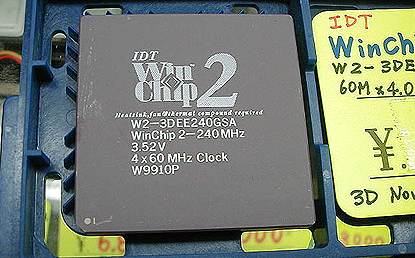
(Image Credit: watch.impress.co.jp)
Date Released: 1997
Clockspeed: 180MHz - 250MHz
Did you know?
Intel Celeron
Intel had done well serving the higher end and server markets up through the Pentium II and Pentium II Xeon, but the company lacked a true entry-level chip targeted specifically at the value PC sector. Enter the Celeron, a much lower performance part with a much lower price that first appeared in 1998.
Later in the x86 game, some specific Celeron models would make a compelling alternative for end-users looking to save a buck or three without sacrificing too much performance, particularly for those willing to overclock, but first-run Celerons based on the Pentium II core met with poor initial reaction from the general populace. This was due, in part, to the lack of L2 cache at debut, a trait which helped cripple performance. Later on, Intel would release another version with 128KB of L2 cache, and this would, in some cases, double the performance over the cacheless version. The combination of full speed L2 cache and ability to run beyond its stock speed made these second-run Celeron chips a hit among the overclocking crowd.
Throughout the years, Intel's Celeron line has accompanied Intel's mainstream processors, with the latest Celerons being built around the Allendale architecture and sporting two-cores.
The biggest gaming news, reviews and hardware deals
Keep up to date with the most important stories and the best deals, as picked by the PC Gamer team.
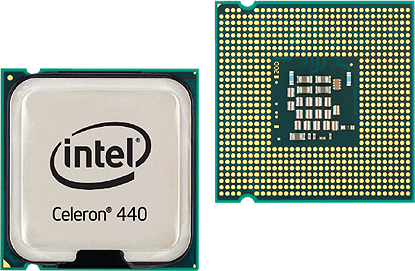
Date Released : 1998
Clockspeed: 266MHz - 3.2GHz
Did you know?
AMD K6-2 and K6-2+
Continuing the success of the K6, AMD's K6-2, released in 1998, brought another MMX unit to the table as well as a new SIMD instruction set famously known as 3DNow! This gave AMD a slight head start in tearing through 3D applications before Intel fired back with its SSE instruction set. The K6-2 held appeal as a cost-conscious upgrade for Super Socket 7 motherboard owners.
Later on, AMD would follow suit with the K6-2+, which added 128KB of L2 cache and a smaller manufacturing process (180nm versus 250nm).
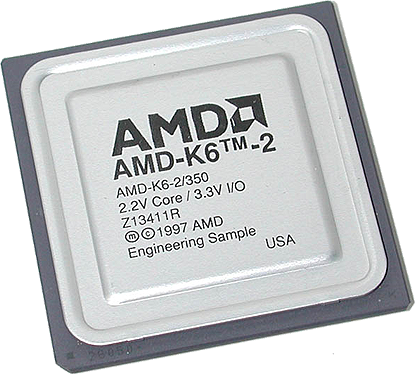
(Image Credit: CPU-World.com)
Date Released : 1998
Clockspeed: 233MHz - 50MHz
Did you know?
SIMD, aka 3Dnow!, stands for "Single Instruction, Multiple Data." It's also known commonly as "vector instructions."
AMD K6-3
The last of the K6 line, AMD's K6-3 showed up in early 1999 and was the last Socket 7 processor ever made. K6-3 didn't have much time to bask in the the limelight, as Intel released a new processor, the Pentium III, just a few days after AMD's launch.
Essentially a K6-2 with 256KB of L2 cache and more than twice as many transistors (21.3 million versus 9.3 million), the K6-2 was initially successful, but quickly forgotten once AMD released its Athlon series.
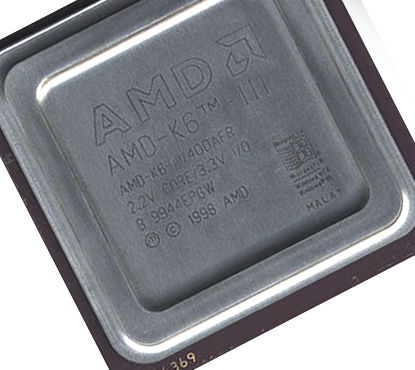
(Image Credit: Knowplace.org)
Date Released : 1999
Clockspeed: 350MHz - 570MHz
Did you know?
Intel Pentium III and Pentium III Xeon
Things really started cooking for Intel with the release of the Pentium III in 1999. The addition of SSE instructions led to the ability to process up to four single-precision floating point numbers simultaneously and it was better at handling 3D, imaging, streaming content, and other multimedia tasks than the Pentium II.
Later on, Intel would release the Pentium III Coppermine. Coppermine featured 256KB of integrated full-speed L2 cache, a tweaked pipeline, and other enhancements that led to a sometimes significantly faster processor than the first Pentium III.
Yet another PIII chip -- called Tualatin -- would appear, which boasted higher clockspeeds, more cache, a die shrink, and lower temp voltage requirements leading to lower temps. Tualatin would provid the initial framework for Intel's mobile Pentium-M processor, which would later go on to inspire today's Core i7 CPUs.
As for the Pentium III Xeon, Intel's server chip didn't differ dramatically from its desktop brethren, although later run PIII Xeons would add more cache (up to 2MB) and support quad-processor configurations.
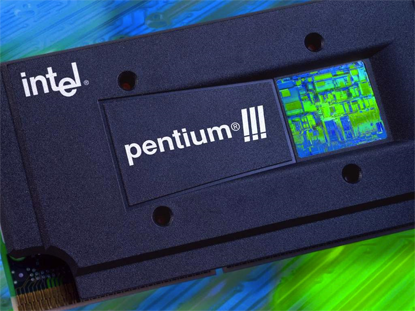
(Image Credit: Deskpicture.com)
Date Released : 1999
Clockspeed: 450MHz -1.4GHz
Did you know?
AMD Athlon (Classic and Thunderbird)
Arguably the most significant series in AMD's CPU history, and certainly the most important in the company's recent history, AMD's Athlon line hit Intel square between the eyes and was such a success, even the Intel faithful found themselves building an AMD system for the first time. Dirk Meyer, who would later rise in rank as AMD's CEO, led the design team that developed Athlon, at first a cartridge-based processor with 512KB of L2 cache. Debuting at 500MHz, AMD beat Intel to the 1GHz mark with its Athlon processor, an important (and much anticipated) milestone at the time.
Over time, AMD would tweak its Athlon processor for the better, starting with the Thunderbird. The new core revision brought with it faster cache along with a few other tweaks that made it highly desirable. It also kicked off AMD's Socket A (462), one of the most successful motherboard sockets of all time.
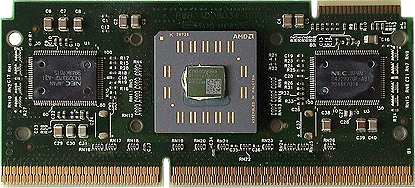
(Image Credit: Wikipedia)
Date Released: 1999
Clockspeed: 500MHz - 1.4GHz

